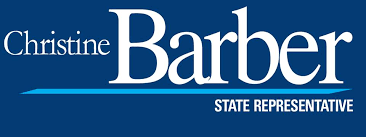Reclaiming the Mystic
While Medford and Somerville are great places to live, one thing we often complain about is a lack of open space. For many, this means driving far to access a park or waterfront. We forget, or simply are unaware, that though we may be immediately surrounded by city blocks and urban streets, we live within 3 miles of over 60 acres of a waterfront park with beautiful trees, open space, and paths. Would you know what this is? It’s the Mystic River and Macdonald Park, an underutilized gem near Station Landing and Mystic Valley Parkway.
Long ignored due to lack of upkeep and the difficulty of accessing the park across busy roadways, Macdonald Park, like the Mystic River itself, is now experiencing a renaissance. I had the pleasure of walking in the park recently with fellow elected officials and members of local environmental organizations to discuss opportunities—and exciting new developments—for the Mystic River and parklands. And I also went canoeing in the river with Somerville 5th graders as part of a partnership between Groundwork Somerville, the National Park Service and Wilderness Inquiry, who work together to help young people learn about the ecosystem in our backyard. In our dense urban environment, it’s critical that we are aware of and visit places like Macdonald Park, the largest park on the Mystic River. With the help of the Mystic River Watershed Association’s new Mystic Greenways Program and stronger partnerships between state and local leaders, the Department of Conservation and Recreation, and city officials, there are exciting things happening to bring more people to the park.
Last year, I joined work that Sen. Jehlen and Rep. Donato have championed for years, in helping to secure $250,000 in the state budget to fund design and construction work based on the Mystic River Master Plan, a detailed guide to restoring and improving the entire Mystic River watershed. Through generous private donations and matching funds from DCR, those funds were used to re-pave pathways and help eradicate some of the invasive weeds that strangle natural plants and make the park feel unsafe. The next phase of that project is to build a new boat launch for people to pull up kayaks and canoes. Additionally, we were able to secure state funding for a mechanical harvester to get rid of to the invasive water chestnuts that often cover the Mystic’s surface. I will continue to work with the local delegation to secure funds to clean up the Mystic River and its surrounding parks; important in this effort will be collaborating with nearby cities to update our stormwater management systems.
As a member of the legislature’s Joint Committee on the Environment, Natural Resources and Agriculture, I remain committed to taking steps to preserve our Commonwealth’s natural resources. But the real work starts at home. This means I will continue to build upon the funding and partnerships that many have worked so hard to cultivate, and will keep working to make the Mystic River and local parks more accessible and essential to visit.
There is much more to be done – including plans for improved bike paths, more seating and performance space, more accessible areas for recreational activities, as well as safety improvements for crossing busy roadways. But it can happen. People didn’t believe the Charles River could be a clean and useful resource, and today it is a fundamental part of the Boston area landscape. It’s time to put that kind of attention towards the Mystic River, equally deserving of our efforts. Enhancing the open space we have now will help generations use this valuable resource for years to come.
This is where you come in – to make Macdonald Park a success story and to make it more appealing to the thousands of residents who live nearby, we need you. You can visit the park, appreciate what is there, and then help us make sure the designs and plans for better access to the park suit your needs. Have you visited Macdonald Park or the Mystic River? How many times can you get there this fall? It’s time to get out and take advantage—and ownership—of open space in our community.
